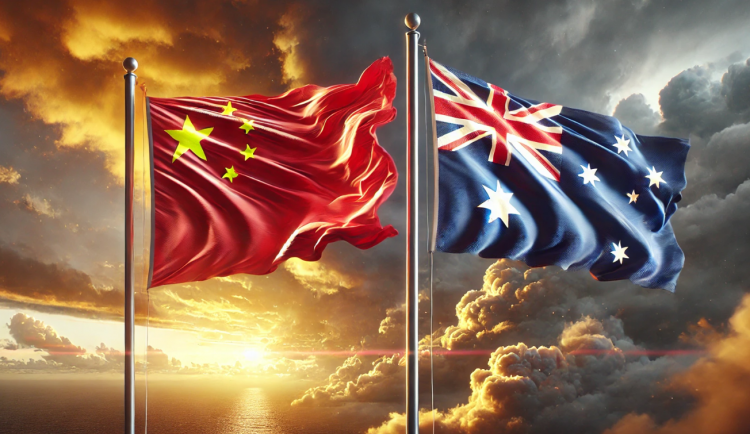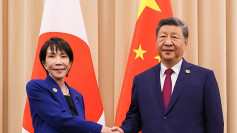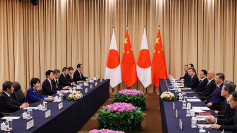Australia has lodged a formal protest against China after a Chinese fighter jet released flares dangerously close to an Australian surveillance aircraft over the South China Sea. The incident, which Australia's defense minister described as "unsafe and unprofessional," comes as a Chinese naval task force approaches Australian waters, raising further concerns about Beijing's expanding military presence in the Pacific.
Australia's Defense Minister Richard Marles said on Thursday that an Australian P-8 Poseidon surveillance aircraft was conducting a routine patrol on Tuesday when it was intercepted by two Chinese J-16 fighter jets. One of the jets released flares within 30 meters (98 feet) of the Australian plane, an act Marles said could have resulted in serious damage. "Had any of those flares hit the P-8, that would have definitely had the potential for significant damage to that aircraft," he told Sky News.
While no injuries or damage were reported, Australia's military immediately protested the maneuver, filing complaints both in Canberra and with Chinese officials in Beijing. The Australian Defense Ministry stated, "For decades, the [Australian Defense Force] has undertaken maritime surveillance activities in the region and does so in accordance with international law, exercising the right to freedom of navigation and overflight in international waters and airspace."
China has rejected Australia's complaints, with Foreign Ministry spokesperson Guo Jiakun accusing the Australian aircraft of deliberately intruding into what Beijing considers its territorial airspace. "China has lodged solemn representations to Australia, demanding that Australia stop its infringement and provocations and stop undermining peace and stability in the South China Sea," Guo said at a press conference. He defended China's military response as "legitimate, lawful, professional, and restrained."
The confrontation over the South China Sea coincided with the approach of a Chinese naval task group into waters northeast of Australia. The Australian military confirmed that three Chinese warships-the Type 055 destroyer CNS Zunyi, the Type 054A frigate CNS Hengyang, and the Type 903 replenishment vessel CNS Weishanhu-had entered the Coral Sea after transiting through Southeast Asia. One of the vessels, the Hengyang, was observed sailing north of Australia.
The Australian military stressed that it monitors all maritime traffic in its 200-nautical-mile exclusive economic zone and respects the principle of freedom of navigation. However, the movement of Chinese warships so close to Australia's coast follows a pattern of increased Chinese naval operations in the Pacific. Last October, China sent a flotilla to Vanuatu, an island nation east of Australia, as part of what Beijing described as "far-sea combat drills."
China has significantly expanded its naval reach in recent years, with a fleet now surpassing the United States in hull count. Beijing's military buildup in the South China Sea has included constructing artificial islands, deploying military installations, and asserting territorial claims over vast swaths of the waterway, despite competing claims from neighboring nations. Australia has remained aligned with the U.S. in countering China's assertiveness in the region, recently participating in joint naval exercises with American forces.
Australia's latest confrontation with China follows a series of previous military encounters. In May 2024, Australia accused a Chinese fighter jet of conducting an unsafe maneuver near an Australian navy Seahawk helicopter over the Yellow Sea by releasing flares in its path. The helicopter pilot had to take evasive action to avoid the flares, though no damage was reported. In November, Canberra protested after a Chinese destroyer used sonar in a manner that allegedly endangered Australian divers working to free entangled fishing nets from their ship's propellers off the coast of Japan.
The latest developments come amid broader tensions in the Indo-Pacific. In recent months, China has also clashed with the Philippines over disputed territories in the South China Sea. In December, Chinese coast guard ships used water cannons against a Philippine patrol vessel, an act condemned by U.S. officials. Last month, Filipino authorities recovered what they suspected to be a Chinese submarine drone in contested waters.
Australia has been ramping up its defense posture in response to China's growing military influence. Under the AUKUS security pact with the United States and the United Kingdom, Australia is set to acquire nuclear-powered attack submarines, enhancing its ability to counter China's naval expansion. Defense Secretary Pete Hegseth reiterated the U.S. commitment to strengthening regional alliances, emphasizing that Beijing's aggressive tactics will not go unchecked.






